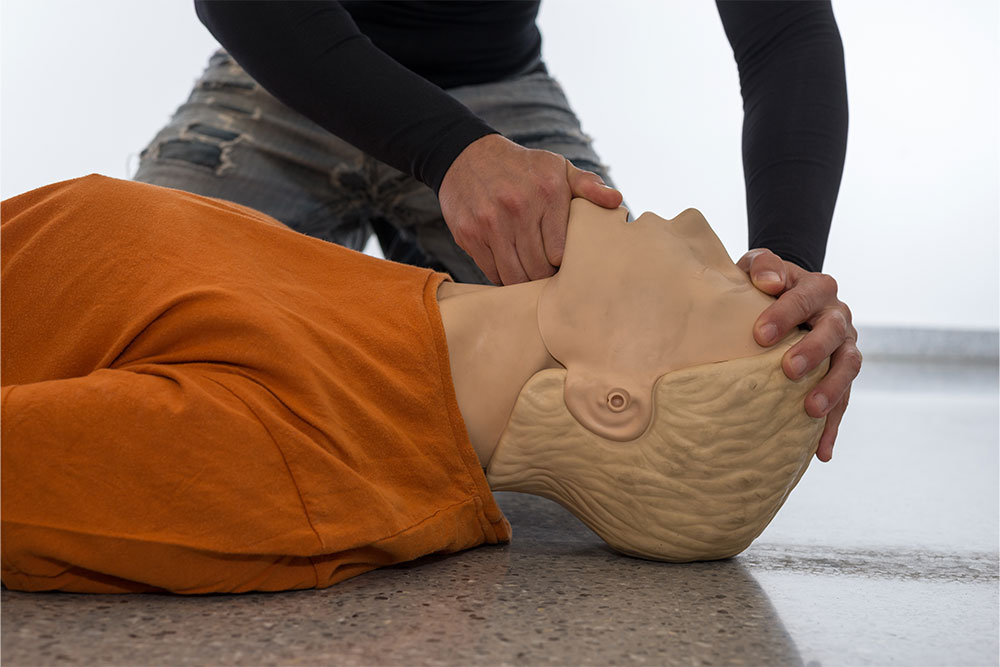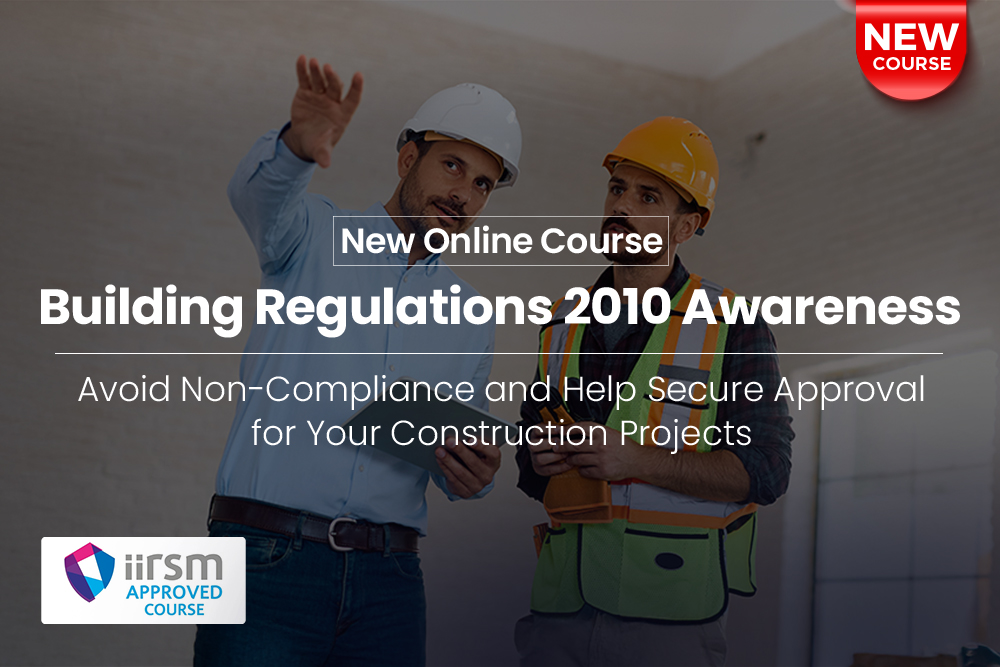
What’s worse than seeing a colleague suffer a serious injury? Seeing a colleague suffer a serious injury when no one else is around. Being the sole bystander puts you in a tough spot. Your actions could be the difference between life and death. So, what should you do if an accident or sudden illness occurs at work?
Our guide explains what you should do if you witness a serious accident in the workplace. It lists the actions you must take to give the casualty the best possible chance of recovery. It also covers what to do after the incident, including reporting duties and preventing further harm.
What Should You Do Before an Accident or Sudden Illness Occurs at Work?
Most people are lucky enough to never witness a sudden illness or accident at work. Unfortunately, this means most people never prepare for one. But the best emergency response starts well before the emergency.
Employers must provide “adequate and appropriate” first aid for their workplace. This requirement comes from the Health and Safety (First Aid) Regulations 1981. A first aid needs assessment is necessary to determine what is adequate and appropriate for the workplace.
But at a minimum, every workplace must have:
- A first aid kit
- Someone responsible for that first aid kit
Most workplaces will also need a trained first aider who can provide emergency care and treat minor injuries.
So, check where your workplace’s first aid kit is and who (if anyone) has been first aid trained.
Knowing this information now can save precious seconds in a critical situation.
What Should You Do If an Accident or Sudden Illness Occurs at Work?
Concern is often the first response to a serious accident in the workplace, quickly joined by panic.
Panic stems from a sense of helplessness, so it often hits hardest when we’re on our own and need to handle the situation without help. Being in a heightened state will only make the situation worse, so do your best to remain calm. Remember that you’ve taken the time to ask, “What should you do if an accident or sudden illness occurs at work?” This alone puts you ahead of most people.
If there are bystanders, take a moment to settle them. But the best action is to focus on the casualty. We’re conditioned to follow other people’s leads. If you calmly and confidently tend to the patient, it will help reassure others.
After a brief moment to collect yourself and calm the situation, it’s time to send for help.
Send for Help
In the event of a serious illness or accident, contact the emergency services immediately.
Dial 999 for life-threatening emergencies. You can also dial 112 – the European equivalent of 999. Both services offer support in critical situations.
If others are on hand, it’s best to have them call while you tend to the casualty. It’s also a good idea to send someone to retrieve the trained first aider (if there is one).
If you’re on your own, stay with the casualty. The priority is assessing the situation and administering first aid. Call the emergency services and put them on speakerphone. Do not leave to find a trained first aider. You’ll have to handle things yourself.
Assess the Situation
After contacting the emergency services, take a moment to assess the situation.
Scan your surroundings for any remaining hazards, such as:
- Bystanders
- Obstacles
- Sharp objects (broken glass, twisted metal, etc.)
- Hazardous substances
If there are any hazards, do your best to make the area safe. Rushing in could result in two casualties instead of one, so be cautious. Only approach the casualty if you’re confident it won’t put you in danger.
Assess the Casualty
If the area is safe, move in to tend to the casualty.
First, check if they’re responsive.
Start by asking what happened. If they do not respond, gently shake their shoulders and continue the questioning.
Any conscious reaction – verbal or non-verbal – marks the patient as responsive. This is important to know if there are multiple casualties.
Unresponsive casualties should be prioritised as their injuries are likely more severe. Responsive casualties may even be able to begin treating themselves while you focus on the more urgent injuries.
What Should You Do If an Accident or Sudden Illness Occurs at Work and the Casualty is Unresponsive?
What should you do if an accident or sudden illness occurs at work and the casualty is unresponsive? In these situations, you need to act fast. Work through the acronym ABC (Airway, Breathing, Circulation) to determine your next steps.
Airway
Check the casualty’s airway is clear.
- Place one hand on their forehead and tilt their head back.
- Use two fingers from your other hand to gently open the casualty’s mouth.
Positioning the casualty’s head this way will help open their airway and allow you to check their breathing.

Breathing
After opening the casualty’s airway, listen for breaths and watch the patient’s chest for movement.
Do this for at least ten seconds.
If they’re not breathing or their breaths are irregular, CPR should be administered.
Circulation
It’s also important to check for major wounds that will affect circulation. Severe blood loss will limit oxygen flow in the casualty’s body, even if they’re breathing normally.
Performing CPR
If you cannot detect an unresponsive casualty breathing, or their breaths are irregular, it’s possible they’re in cardiac arrest. In these situations, cardiopulmonary resuscitation (CPR) drastically improves survival rates.
Using an automated external defibrillator (AED) together with CPR gives the casualty the best possible chance of recovery. (We’ll cover AEDs in the next section.)
To perform CPR:
- Kneel by the casualty.
- Place the heel of your hand on the middle of the casualty’s chest.
- Place your other hand on top and interlock your fingers.
- Keep your arms straight and lean over the casualty.
- Push down hard. Chest compressions should be between 5 to 6cm deep.
- Release pressure and allow the casualty’s chest to come back up.
- Aim for two chest compressions per second. (Following the beat of the song “Stayin’ Alive” can help with this.)

You can share CPR duties with other bystanders. Switching positions every one to two minutes can help prevent exhaustion.
Continue CPR until one of these outcomes:
- Emergency services arrive
- The casualty shows signs of life
- You’re too tired to continue safely
- An AED is ready for use
Using an AED
AEDs deliver an electric shock to a casualty’s heart, returning it to a healthy rhythm.
They’re much easier to use than you might think. The devices themselves give audio descriptions of what to do at each step. They also automatically analyse the casualty’s heartbeat and only activate if it’s safe and necessary.
AED designs vary, but the broad steps of using one are:
- Expose the casualty’s chest and remove any clothing or jewellery.
- Remove the paper backing on the AED’s pads and place them on the chest.
- One pad on the casualty’s upper right chest, below the collarbone
- One pad on the casualty’s lower left chest, below the armpit
- Let the AED analyse the casualty’s heartbeat.
- Stop any CPR and keep your hands clear.
The AED will audibly announce if a shock is necessary and alert you to stand back. It may then deliver a shock automatically or instruct you to press the necessary button on the device.
After a shock has been delivered, leave the pads on and continue CPR. After two more minutes of chest compressions, the AED will analyse the casualty’s heartbeat again and reactivate if necessary.
Putting the Casualty in the Recovery Position
If a casualty is stabilising after administering CPR or using an AED, put them into the recovery position until help arrives.
- Kneel beside the casualty.
- Place the nearest arm at a right angle.
- Place the other arm across their chest, hand on cheek.
- Bend the far knee to a right angle.
- Roll them onto their side by pulling the bent knee.
- Tilt the head back slightly.

Stopping Severe Blood Loss
Apply pressure directly to the wound to slow blood loss. Use anything available: fabric, clothing or even your own hands if there’s no better option.
If you have a first aid kit nearby, retrieve a bandage to wrap the wound. Secure it tightly enough to staunch the bleeding without cutting off circulation.
A responsive patient can probably tell you if a dressing is too tight. For unresponsive patients, monitor their skin around the bandage after application. Any swelling, coldness or stark colour change (skin turning pale, blue or dark) is a sign the bandage is too tight.
What Should You Do After an Accident or Sudden Illness Occurs at Work?
Employers of ten or more people must record workplace accidents under the Social Security (Claims and Payments) Regulations 1979.
Accident reports should ideally be completed by the person injured or affected. However, when this isn’t possible (such as when someone is incapacitated), people on the scene may have to fill out the relevant incident report form.
The record should be thorough. It may later be used as evidence in a social security claim. It may also be submitted to the Health and Safety Executive (HSE).
Under the Reporting of Injuries, Diseases and Dangerous Occurrences Regulations (RIDDOR), the HSE must be notified of certain ‘reportable’ workplace injuries.
Reportable injuries are typically severe ones. If you’ve had to administer CPR, it will qualify as reportable. (You can find the full list of reportable injuries here.)
You must also make a RIDDOR report if:
- An employee is incapacitated for seven days or more.
- An employee suffers certain occupational diseases.
- Members of the public are injured in your workplace and need hospital treatment.
What Should You Do If an Accident or Sudden Illness Occurs at Work? – Key Takeaways
- Learn now where first aid kits are and if there are any trained first aiders in your organisation.
- Call the emergency services first.
- Check the area is safe before approaching a casualty.
- Follow ABC to check the casualty is breathing and responsive.
- If a casualty isn’t breathing, administer CPR.
- Note as many details of the incident as possible. Ensure these are recorded in the workplace accident book.
Accident Investigation Training
This blog was written with one question: “What should you do if an accident or sudden illness occurs at work?” But there’s more than one answer.
If you’re a witness, you should remain calm, call the emergency services and administer treatment as best you can.
If you’re an employer or manager, you should investigate the accident and ensure it can never happen again.
Our online Accident Investigation Training explains how to do this. It demonstrates the steps to a successful accident investigation that reveals the underlying cause, enabling you to identify and address potential hazards. By understanding the root causes of incidents, you can enhance overall safety and prevent future accidents, even those that might seem unrelated.
Learning from a minor incident today could prevent a major one tomorrow. (You should still know where your first aid kit is, though.)































































































































































































































































































































































































































































































































































































































































































































































































